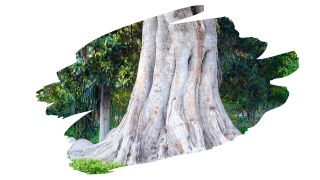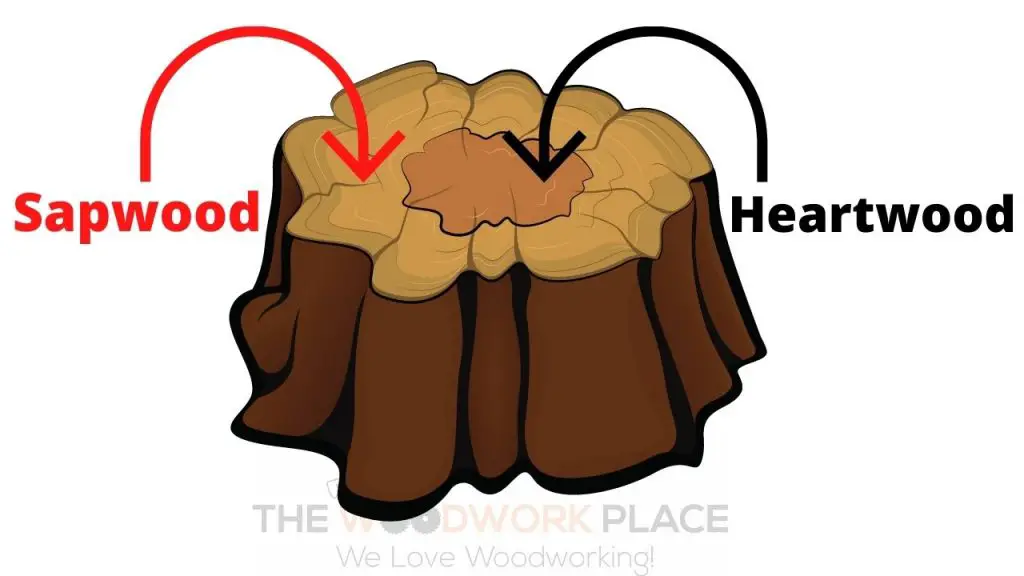Free firewood is great. But, there’s more to selecting firewood than simply using any old log from your backyard.
That’s because good firewood needs to be a clean burning source of fuel that can burn long enough to really heat your home. And everything — from tree sap to wood density — is a key factor when it comes to choosing good firewood.
So, how does Elm wood stack up a firewood choice for an indoor fireplace?
Well, in this post, you’ll discover what really makes for clean burning firewood. You’ll also learn exactly how much energy burning Elm can produce…and how it compares against other North American lumbers.

This post may contain affiliate links to products that we receive a commission for (at no additional cost to you). Learn more here.
What Type Of Wood Generally Burns The Cleanest?
Good firewood should be dry, first and foremost. After that, it should contain very little tree pitch or sap.
And last, but not least, firewood should not come from a poisonous or otherwise toxic tree species.
Now, when it comes to heat, you will also need your firewood to be fairly dense. That is because dense wood burns longer and hotter.
So, with all of this in mind, dense hardwoods like White Oak and Birch wood, both make for fantastic firewood.
Related Post: Is Birch Wood Any Good For Cutting Boards?
What About Smoke? How Do You Minimize Smoke Emissions?
When firewood produces a lot of smoke, it is because there is a lot of moisture in that log.
The fire burns the moisture, turning it into steam. And that excessive steam thickens up the smoke. So, if you want to minimize thick lung clogging smoke emissions, then you need to minimize the moisture inside firewood.
Now, the way you do this is by allowing firewood to dry first before burning it. This is called seasoning wood, and it involves allowing wood to dry for a few months.
Related Post: How To Season Wood (7 Tips)
And What Kind Of Wood Should Not Be Burned In A Fireplace?
Avoid burning wood from poisonous trees. The reason for this is simple; the poisonous compounds in those trees can collect in the smoke, fumes, and soot.
And those toxic compounds are far too dangerous to have gathering in your home.
In addition to this, you should also avoid using wood that has a lot of sap or pitch in it. That’s because these wood types pose a fire hazard if they’re burned in an indoor fireplace.
You see, tree pitch/sap are thick resinous substances that can collect in the soot lining a chimney flue. This can cause chimneys to become backed up, and that can lead to chimney fires.
Related Post: Is Sassafras Good Firewood For An Indoor Fireplace?
OK. So What About Elm Wood? Is It Safe To Burn In An Indoor Fireplace?
When it comes to the key criteria for firewood, Elm wood passes. First off, Elms lumber isn’t toxic to humans.
And although some Elm trees can appear to produce a lot of sap, that sap is likely to be something called ‘Slime Flux’.
Slime flux is an oozing resin that’s the result of a bacterial infection at the heartwood of Elm.

In-spite of this, Elm is still a world away from being saturated with the kind of thick resinous sap you’d find in say Cedar or Pine. Which means you can burn Elm in a fireplace with a chimney.
Yet, the one area that Elm wood falters slightly — as a firewood — is in the heat it produces.
This particular wood type doesn’t produce a great amount of heat for your home. Especially when you compare it against better firewood choices, such as Oak and Birch.
How Much Heat Does Elm Wood Produce Then?
Well, the BTU (British Thermal Unit) rating of wood reflects the amount of energy generated by burning wood.
You see, the BTU measures the amount of energy it takes for fire to consume a piece of material. The more energy it takes, the longer that firewood will burn. And this in turn leads to more heat for your home.
Medium to Low BTU firewoods don’t burn for very long, and are little more than good kindling — and are certainly not good sources of fuel.
Now, when it comes to Elm wood, this lumber has a BTU of 21.6. That’s not too bad, until you compare it against White Oaks 25.7 BTU, and Birch’s 23.6 BTU.
So Does That Mean I Shouldn’t Use Elm Wood?
Far from it. If you can get your hands on a supply of free Elm wood, then you should go ahead and use it. This wood — provided it’s dry — is a clean burning source of fuel.
But if you want affordable firewood, (that’ll take significant time and/or money to stack up), then there are better options.
To Wrap Up, Here Are The 3 Key Takeaways From This Post…
- 1). Clean burning firewood should contain very little sap, and should come from non-toxic trees.
- 2). Good firewood should also be fairly dense, so that it burns long enough to produce a fair amount of heat.
- 3). When it comes to density and heat, Elm wood doesn’t come close to beating better choice firewoods such as White Oak and Birch.
References:
Wood Heating | Forestry.usu.edu
Wood Smoke Awareness | EPA.gov



